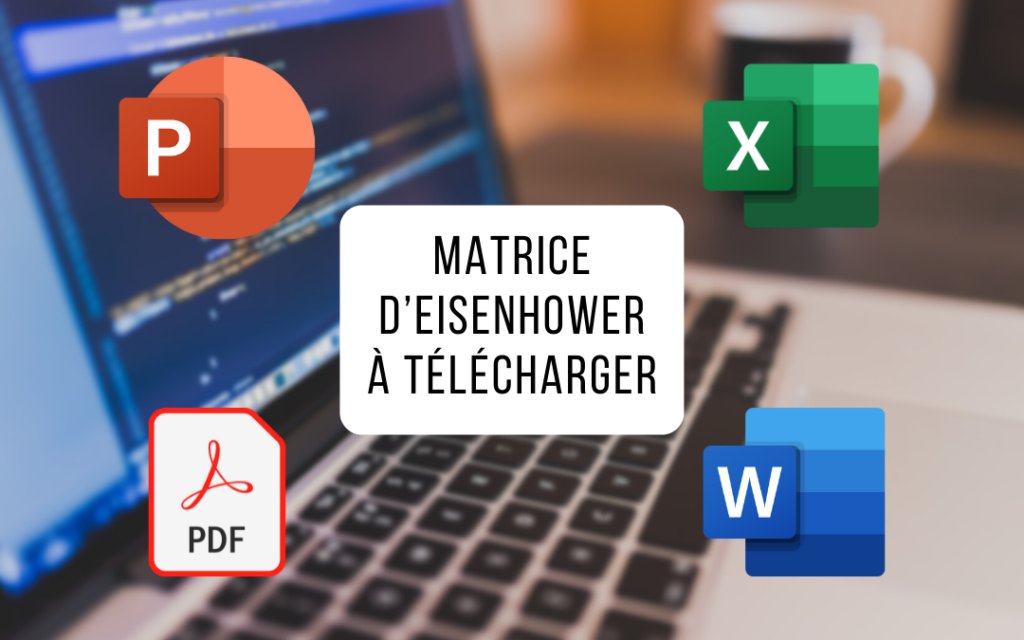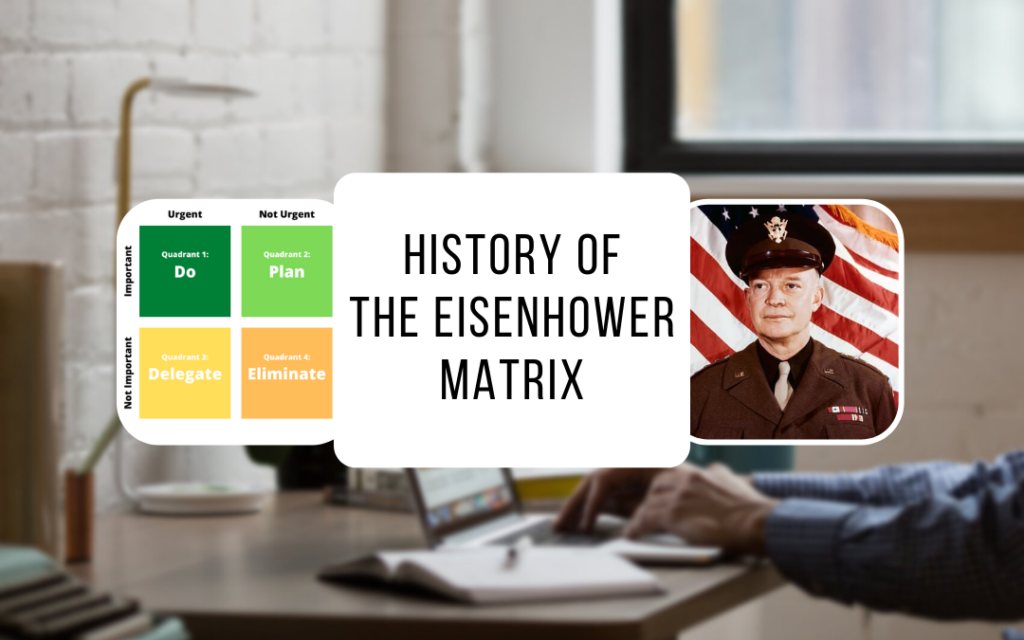What is the Eisenhower matrix?
À the origin of the Eisenhower matrix there is the objective to help us answer the following question:
How can I manage my time efficiently by correctly determining my priorities?
Indeed, the Eisenhower matrix is a tool that allows you to determine the priority tasks to accomplish in order to achieve your goals.
This matrix is presented in the form of two perpendicular axes, one of which evaluates the importance and the other the urgency of an action. The intersection of these two axes allows us to distinguish four different quadrants.
- The first quadrant is used for important and urgent tasks, so these are the To Do tasks.
- The second quadrant is for important, but not urgent tasks that represent the tasks to Plan.
- The third quadrant is for urgent, but not important tasks, which are therefore to be Delegated.
- And finally the fourth and last quadrant for the not important and not urgent tasks that are to be deleted.
Eisenhower Matrix: Explanation
To know how to manage your time and priorities and thus be more efficient, thanks to the Eisenhower matrix, you first need a short explanation of each part (or quadrant) of the matrix: Do – Plan – Delegate – Delete.
Do
The tasks that will be present in this quadrant are the most important tasks that must be done quickly. These are the tasks that are crucial to the project and that allow the achievement of the objectives that have been set.
Once the task is assigned to this quadrant, it must be done by the next day at the latest. Eat the frog “literally” eat the frog “which recommends doing the most important task first thing in the morning.


Plan
The tasks in this quadrant are the tasks that allow the project to move forward but there is no deadline to do them. They are important, but not urgent. A very large number of tasks fit into this quadrant, it can be e-mails, the development of an action plan, training, etc…
If an action falls into this quadrant, it will have to be planned in time so that its realization does not impinge on more urgent tasks. The planning of the tasks in this quadrant should be done over the following weeks. It is preferable to organize yourself so that the maximum number of important tasks are not urgent so that they end up in this quadrant because it allows you to simplify your time management and not be under constant pressure.
Delegate
In this quadrant we will find the tasks that will be urgent, therefore with a short time limit, but not very important. Thus, since they require fast execution, but the stakes are low, they should be delegated to other trusted individuals who will have the bandwidth to process them quickly.
Beware, these tasks can be very disruptive, as they consume a lot of time, but for a low-stakes result. This can be the processing of a call, email or the creation of a meeting. All tasks that will have no impact on your work should be in this quadrant.


Delete
In this last quadrant you put the tasks that have little interest in being done both for you and for your colleagues. These tasks do not directly help to meet your objectives and have little impact on the project. It is therefore recommended to eliminate them whenever possible in order to avoid wasting time.
It can be, an excessive search for detail, superfluous validations, a useless procedure, etc… In addition to the time wasted to realize them, it will take you as much time afterwards to refocus on a really important task.
Download an Eisenhower matrix here
functional in Excel format
The benefits of the Eisenhower matrix
The Eisenhower matrix allows you to graphically express your action plan and offers a simple but terribly effective visualization that allows you to better manage your time and priorities at work.
By setting it up you will be able to focus on the tasks that have the most impact on your project and your goals. The Eisenhower matrix is a great way to save time at work and not be overloaded and stressed all the time, because you have to do several things at once.


The limits of the Eisenhower matrix
Like all methods, the Eisenhower matrix has its limits because it is a simplified representation of your reality, which is complex.
Its first limitation lies in the need to understand the difference between urgency and importance, notions that are too often mixed up or amalgamated by the force of bad habits.
Moreover, it is a demanding method, because it imposes to take the time to analyze its actions and to come back to it regularly since the degrees of urgency and importance can evolve in time, and according to the context, or according to the possible evolution of objectives.
Finally, you have to be careful with the number of tasks you put in quadrant A, because it is not realistic to assign all your actions to the first quadrant. This would totally negate the beneficial effects of the Eisenhower Matrix.
To try to organize your priorities efficiently, we suggest you download an Eisenhower matrix template in the format of your choice.




